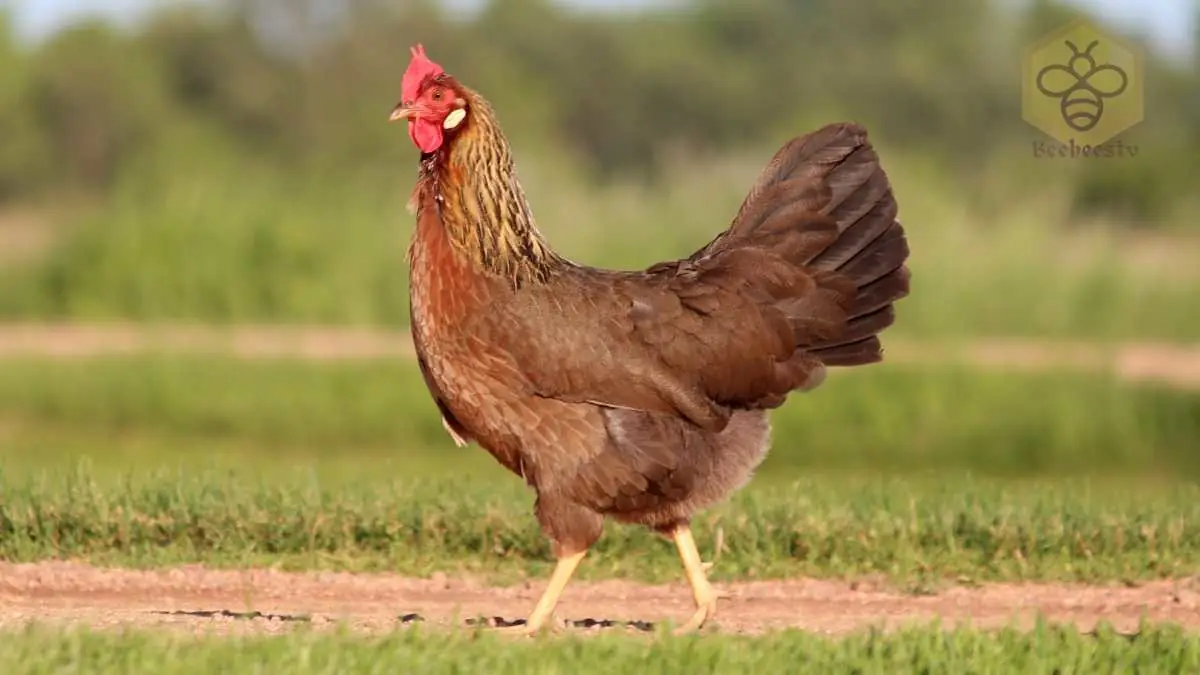Chicken: The World’s Most Domesticated Bird
Chicken
Introduction
The chicken (Gallus gallus domesticus) is one of the most widely domesticated birds, found worldwide. It plays a crucial role in human society as a source of meat, eggs, and companionship. With an estimated population of over 25 billion, chickens outnumber all other bird species.
Scientific Overview
Scientific Name
Gallus gallus domesticus
Common Name
Chicken
Scientific Classification
| Kingdom | Animalia |
| Phylum | Chordata |
| Class | Aves |
| Order | Galliformes |
| Family | Phasianidae |
| Genus | Gallus |
| Species | G. gallus |
Types of Chickens
Chickens come in various breeds, divided into categories such as:
- Layer Chickens – Bred for egg production (e.g., Leghorn, Rhode Island Red).
- Broiler Chickens – Raised for meat (e.g., Cornish Cross, Plymouth Rock).
- Bantam Chickens – Smaller versions of standard breeds, often kept as pets.
- Heritage Breeds – Traditional breeds raised for meat and eggs (e.g., Orpington, Sussex).
Habitat and Distribution
Chickens are domesticated birds and are found worldwide. They can adapt to various environments, including:
- Farms and rural areas
- Backyards in urban and suburban settings
- Wild or feral populations in some regions
While domestic chickens rely on human care, their wild ancestors, the Red Junglefowl, are native to Southeast Asia.
Physical Characteristics
Size and Weight
- Height: 1–2 feet (30–60 cm)
- Weight: 2–10 lbs (0.9–4.5 kg), depending on breed
- Wingspan: Around 2–3 feet (60–90 cm), but chickens are poor fliers
Appearance
Chickens have diverse physical features depending on their breed, but they typically have:
- A comb (fleshy growth on top of the head) and wattles (hanging skin under the beak).
- Feathers that come in a variety of colors and patterns.
- Strong legs with three forward-facing toes and one backward-facing toe for scratching the ground.
Diet and Feeding Habits
Chickens are omnivores and will eat a wide variety of foods, including:
- Grains (corn, wheat, oats)
- Insects and worms
- Seeds and vegetables
- Small lizards or frogs (occasionally)
They use their beaks to peck at the ground and their strong legs to scratch for food.
Predators and Threats
Despite being domesticated, chickens have many natural predators, including:
- Foxes, coyotes, and wolves
- Hawks, eagles, and owls
- Snakes and raccoons
- Humans, who raise them for meat and eggs
Domesticated chickens are also at risk of diseases such as avian flu and Marek’s disease.
Reproduction, Babies, and Lifespan
Chickens reproduce by laying eggs, and their reproductive cycle includes:
- Egg Laying: Hens lay eggs almost daily, depending on breed and season.
- Incubation: Eggs take about 21 days to hatch.
- Chicks: Baby chickens hatch with soft down feathers and are dependent on their mother or heat sources.
- Growth: Chicks develop into juveniles in a few weeks and reach maturity in 5–6 months.
- Lifespan: Domesticated chickens live 5–10 years, but broiler chickens live only a few months due to selective breeding for meat production.
Population and Conservation Status
With over 25 billion individuals worldwide, chickens are not endangered. However, concerns exist regarding factory farming, genetic modifications, and habitat destruction for free-ranging breeds. Some heritage breeds are at risk of extinction due to the dominance of commercial poultry farming.
Behavior and Lifestyle
Chickens are social birds that exhibit:
- Pecking Order: A strict hierarchy within flocks where dominant birds get first access to food.
- Dust Bathing: Chickens roll in the dirt to clean their feathers and prevent parasites.
- Roosting: They sleep in elevated spots to stay safe from predators.
- Communication: Chickens have over 30 different vocalizations to communicate warnings, food discoveries, and emotions.
Ecological Role
Chickens contribute to ecosystems and agriculture by:
- Controlling insect populations.
- Providing natural fertilizer through their droppings.
- Helping in soil aeration by scratching the ground.
FAQs About Chickens
- How many eggs can a chicken lay in a year?
Laying hens can produce between 200–300 eggs per year, depending on breed and environment.
- Do chickens recognize their owners?
Yes! Chickens can recognize human faces and form bonds with their owners.
- Can chickens fly?
Chickens can flutter short distances, but they are not strong fliers like wild birds.
- Why do roosters crow?
Roosters crow to establish territory, communicate with their flock, and respond to external stimuli.
- Are chickens intelligent?
Yes! Studies show that chickens have problem-solving abilities and can remember over 100 faces (both human and chicken).
Conclusion
Chickens are fascinating, intelligent, and highly adaptable birds. Whether raised for eggs, meat, or companionship, they have a long history of coexisting with humans. As one of the most important domesticated animals, chickens continue to play a vital role in global agriculture and food production.
